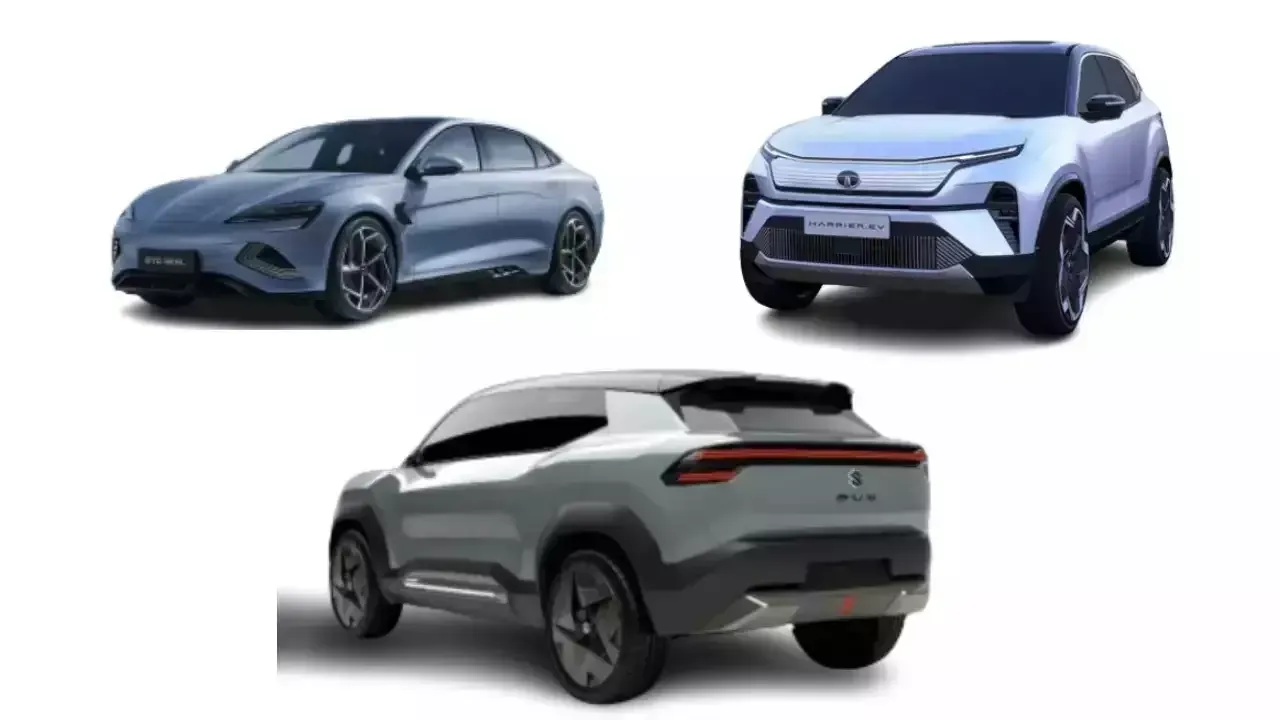

In 2024, the Indian electric vehicle (EV) landscape is on the verge of a transformation, with several automobile companies gearing up for launches, aiming to focus on advanced electric models boasting enhanced ranges and cutting-edge features. These expected introductions are expected to influence the electric automobile sphere and set new standards in the Indian automotive industry.
Tata Motors, a frontrunner in the EV domain, making its Punch compact SUV as an EV. This move is going to redefine affordability in the electric SUV category. Tata's second-generation EV architecture, derived from an Internal Combustion Engine (ICE) platform, is substantially modified for the Punch EV. It will offer two battery options—medium and long-range variants. Early estimations suggest the long-range Punch EV might achieve 315 km per charge, potentially positioning it as a budget-friendly choice in India's rising EV market.
Stepping into the electric domain, Maruti Suzuki is set to make a grand entrance with the eVX electric SUV. First unveiled at the Auto Expo 2023, this model has been designed as an EV, sharing dimensions similar to the Grand Vitara. It will have a range of approximately 550 km with respect to its robust 60 kWh battery pack. Maruti Suzuki's entry into electric mobility is expected to make a considerable impact in the automobile market.
Hailing from the stables of the Chinese EV giant, BYD, the Seal electric sedan is set for its debut in India around mid-2024. Following the introduction of the Atto 3 in late 2022, the Seal showcases BYD's innovation. The vehicle, built on the e-Platform 3.0, offers two battery options—a 61.4 kWh unit and a larger 82.5 kWh unit. With these powertrains, the Seal has remarkable ranges from 550 km to an impressive 700 km per charge. Moreover, its acceleration—reaching 0-100 kmph in a mere 3.8 seconds—positions it as a performance-oriented electric sedan.
Mahindra, a key player in India's EV revolution, is increasing competition with the XUV300 EV, aiming to challenge the success of its Nexon EV. Positioned as a more budget-friendly option, details regarding the XUV300 EV are currently not available. However, it's expected to draw design cues from the upcoming XUV300 facelift and house a 35 kWh battery, showing Mahindra's commitment to expanding its electric vehicle portfolio.
The XUV.e8 is Mahindra's entrance into the electric SUV segment, similar to the popular XUV700's legacy. Exhibited as a concept vehicle last year and spotted undergoing road tests, the XUV.e8 teases an 80 kWh battery and potential power outputs of 230 hp and 350 hp. Rumors suggest a twin-motor setup, hinting at all-wheel-drive capabilities similar to the Thar.e. While specific range details remain unknown, speculations hint at the higher-spec variant offering a 450 km range.
Continuing its dominance in the EV sector, Tata Motors is gearing up to introduce electric versions of its Harrier and Safari models. Previewed at the Auto Expo in January 2023, these EVs are expected to offer top-spec variants with ranges potentially reaching 500 km. It will feature options for multiple battery sizes and an all-wheel-drive system.
Tata's Curvv electric SUV is set for its market debut in the middle of the year, projecting a range between 400 to 500 km on a single charge and employing a dual-motor setup for all-wheel drive. While specific technical details remain undisclosed, the Curvv is expected to have a larger battery compared to the Nexon, highlighting Tata's commitment to evolving its electric lineup.
The dynamic landscape of Indian EVs in 2024 promises a diversity of models catering to various consumer preferences. With advanced technology, extended ranges, and a commitment to environmental consciousness, these upcoming EVs signal a new era in sustainable mobility, driving the nation toward a cleaner and greener automotive future.